Rene Chambellan, Art Deco Architecture’s Master Sculptor, in Brooklyn and Beyond
Sculptor Rene Chambellan left an incredible legacy, most of which will stand up to the whims of architectural popularity and be recognized as true greatness for generations to come.

The Williamsburgh Savings Bank Tower. Photo by Susan De Vries
Editor’s note: We’re thrilled to publish the third of a monthly column featuring new stories about Brooklyn history and architecture from Brownstoner columnist Suzanne Spellen. In the pipeline for the future is a mini-site where all her works will be collected and easy to find in one place.
The Art Deco period of 20th century art and architecture was an inventive Jazz Age take on themes first introduced centuries before. It was the final phase of the Age of Ornament, which became such a staple of 19th century Western architecture. An American artist with a very French name was the master of architectural sculpture during this creative period, commissioned to sculpt the ornamentation that decorates some of the nation’s most well known and significant buildings, from Michigan to Brooklyn. You may not know his name, but you’ve seen his work. He was Rene Paul Chambellan.
Chambellan was born in West Hoboken, N.J., in 1893. His parents, Pierre and Louise, immigrated from France to the United States in 1873. The 1900 census shows them still living in West Hoboken, where Pierre was employed as a designer. The census doesn’t elaborate on the specific industry. Rene is listed as the second youngest of eight children.
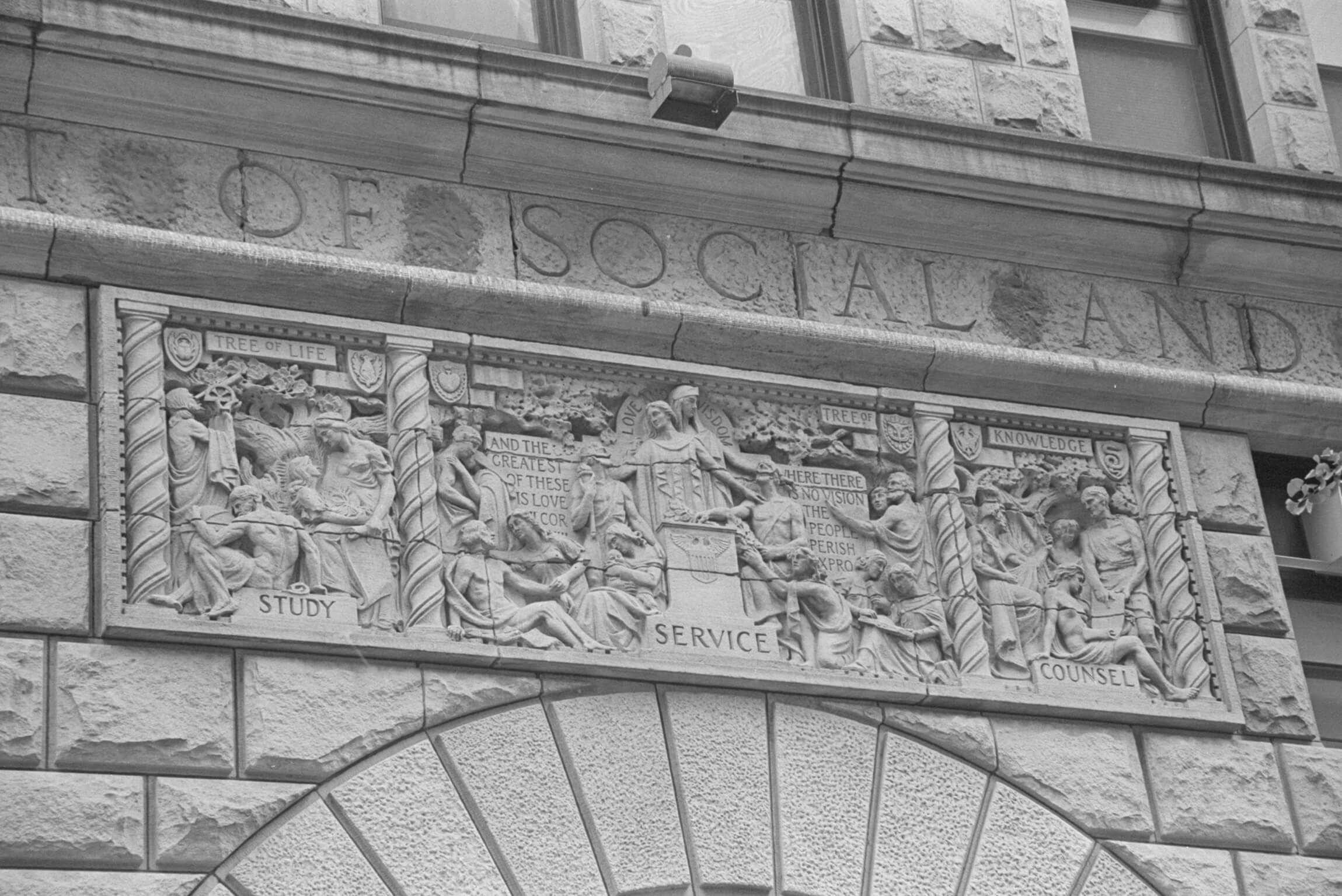
He studied for two years at New York University, between 1912 and 1914, and then left for Paris, where he studied fine arts and sculpture at the prestigious École des Beaux-Arts between 1914 and 1917. He followed that with a year of study at the Académie Julian. World War I was already raging in Europe during this period, but the United States was not involved until 1917. Young Chambellan returned home to join the U.S. Army, where he served as a sergeant in the Army Corps of Engineers in France. It was there he met his wife, Suzanne.
The couple returned to the United States, where he further studied sculpture in New York with Solon Borglum, a prominent American sculptor best known for his large and striking depictions of American frontier life. Chambellan taught sculpting and lectured at NYU for two years, and in 1922 he received his first commission. He created the second-story sculptures on the Russell Sage Foundation building in Manhattan, now the Sage House Condominiums, at 122 East 22nd Street.
The work was well regarded and soon Chambellan was called upon to sculpt ornamentation for some of the period’s most prestigious architects. His next job, in 1923, was ornamentation for the American Radiator building in Manhattan. Chambellan was working on architecture that was initially called the French Modern Style, or Zig-Zag Moderne. The style eventually came to be called by the name most of us know: Art Deco.
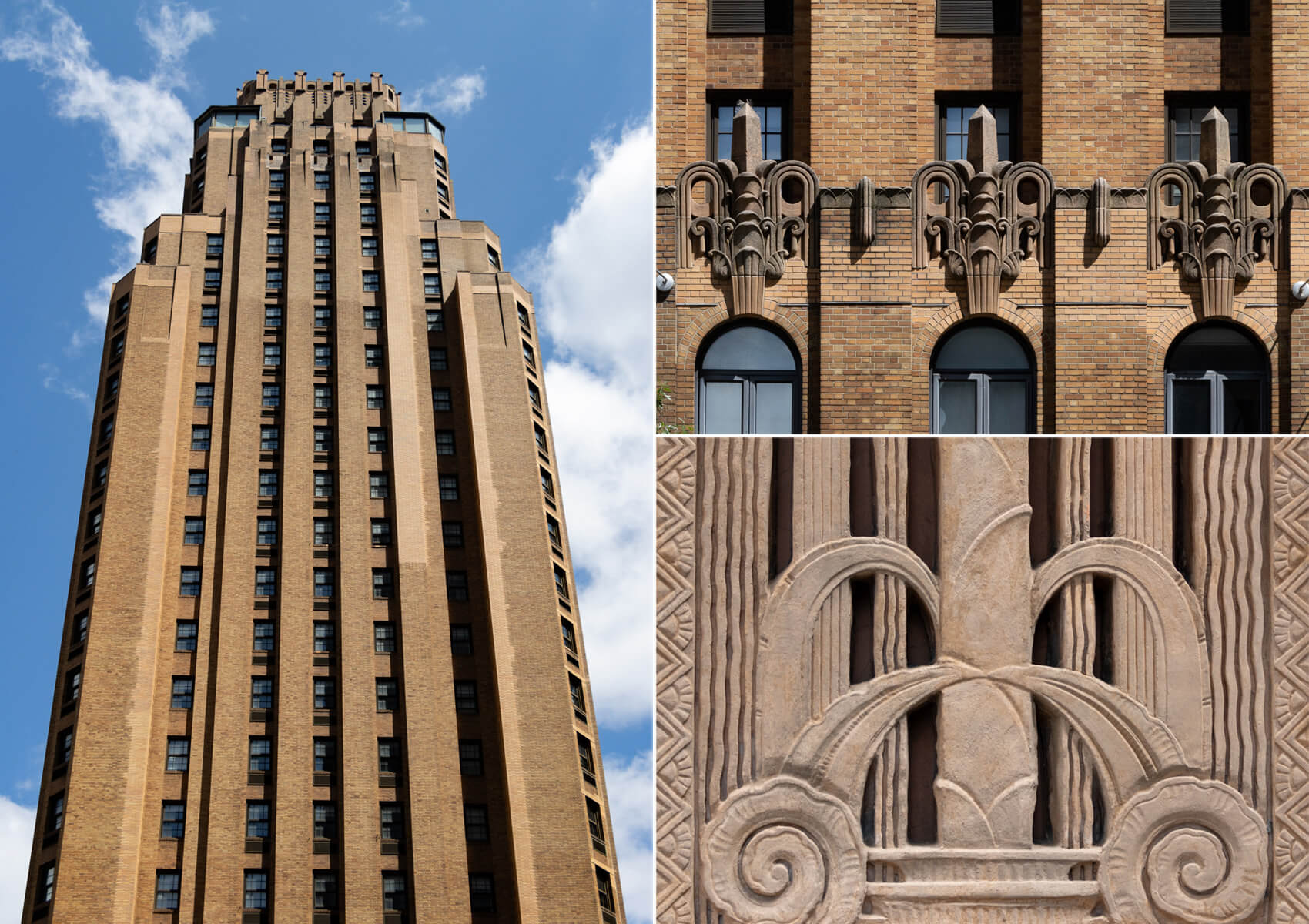
Appropriately for our story, Art Deco is French. The name is derived from the French Arts Décoratifs, and it was flourishing in that country while young Chambellan was studying in Paris. It was a broad movement encompassing decorative arts, product design, interior design and architecture. The name, curiously enough, was not used widely until after an exhibit from the period that opened in 1968. Art Deco made its way around the world, but it took on a life of its own in American architecture in the 1920s through the beginning of World War II.
In the United States, Art Deco became the perfect style for the new “skyscrapers” that were going up in cities across the country. In Manhattan, there were many examples of the style, all characterized by multiple and multi-story setbacks and sheer verticality. The ornamentation on these buildings was often two dimensional, with zig-zags, geometric patterns, lightning bolts and chevrons; expressed in two-dimensional sculpture forms and friezes, often combined with metal screens, decorative glass and more. It was the ideal form for the Jazz Age – tall, big and bold, with a distinct American style, derived from automobiles and industry, metal and glass.
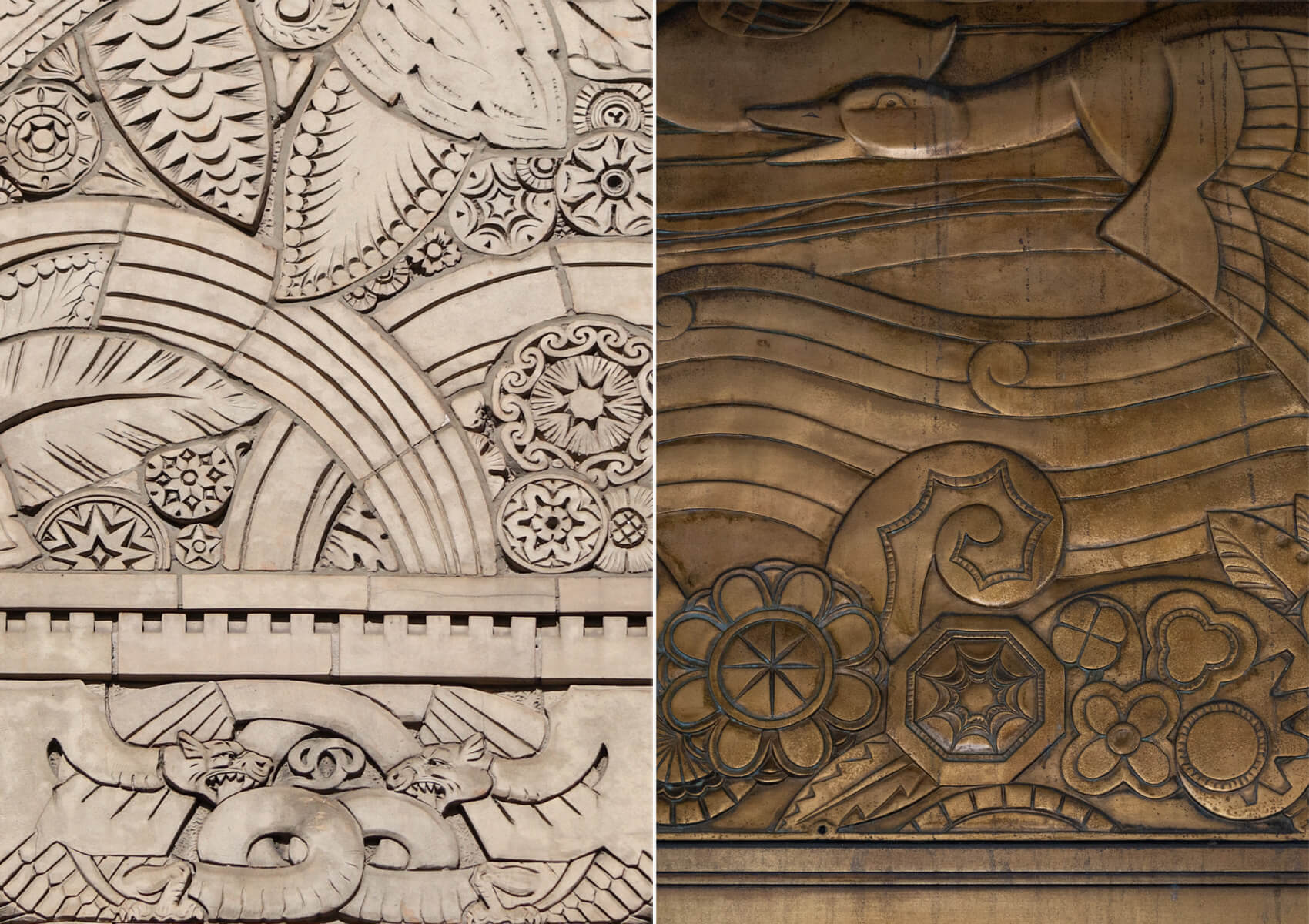
Most of the architects working on New York’s skyline in the ‘20s and ‘30s knew each other; several were also graduates of École Des Beaux-Arts. As Rene’s reputation for superb sculptural ornamentation grew, he worked on some of Manhattan’s most important Deco buildings of the day – the Chanin Building, Rockefeller Center, including the famous Atlas statue facing 5th Avenue, the American Radiator Building, the New York Life Building and the Daily News Building.
Outside of NYC, his work can be found on the Sterling Memorial Library at Yale University (a personal favorite and some of his best work), the National Shrine of the Little Flower in Michigan, the NY State Office building in Albany, The Firestone Memorial Library at Princeton, and Buffalo City Hall, and the Home Savings Bank, also in Albany, NY. He designed decorative iron gates for many buildings and in addition, had a flourishing career in sculpting medals and seals, his most well-known being both the Caldecott and Newbery Medals awarded for children’s books.
Brooklyn was also the recipient of his talent. He worked with Robert Helmer of the firm Halsey, McCormick and Helmer in his design of two banks, the Williamsburgh Savings Bank and the Kings County Savings Bank. These buildings represent some of his finest work. The Williamsburgh Savings Bank at 1 Hanson Place was constructed between 1927 and 1929. It is arguably Brooklyn’s finest Art Deco style building, in a borough that has quite a few great Deco structures. The bank has the setbacks and the classic Art Deco massing of a good skyscraper of this period. Actually, the building is a 35-story skyscraper office building sitting on top of a six-story church. The underpinnings of this building must be tremendous. Up until 2009, it was the tallest building in Brooklyn.
Chambellan’s work can be found primarily around the base of the building which holds a massive ground floor bank rising 63 feet tall with an exceptional interior and exterior beauty. The bank is a rare building with a triple landmark statue. It is an individual landmark, a rare interior landmark and is part of the Brooklyn Academy of Music Historic District. Laid out purposely like a basilica, it truly is a lavish temple of savings. That theme of savings and thrift was emphasized in many ways on the exterior sculpture, especially around the bank entrance. They serve as both ornament and instruction.
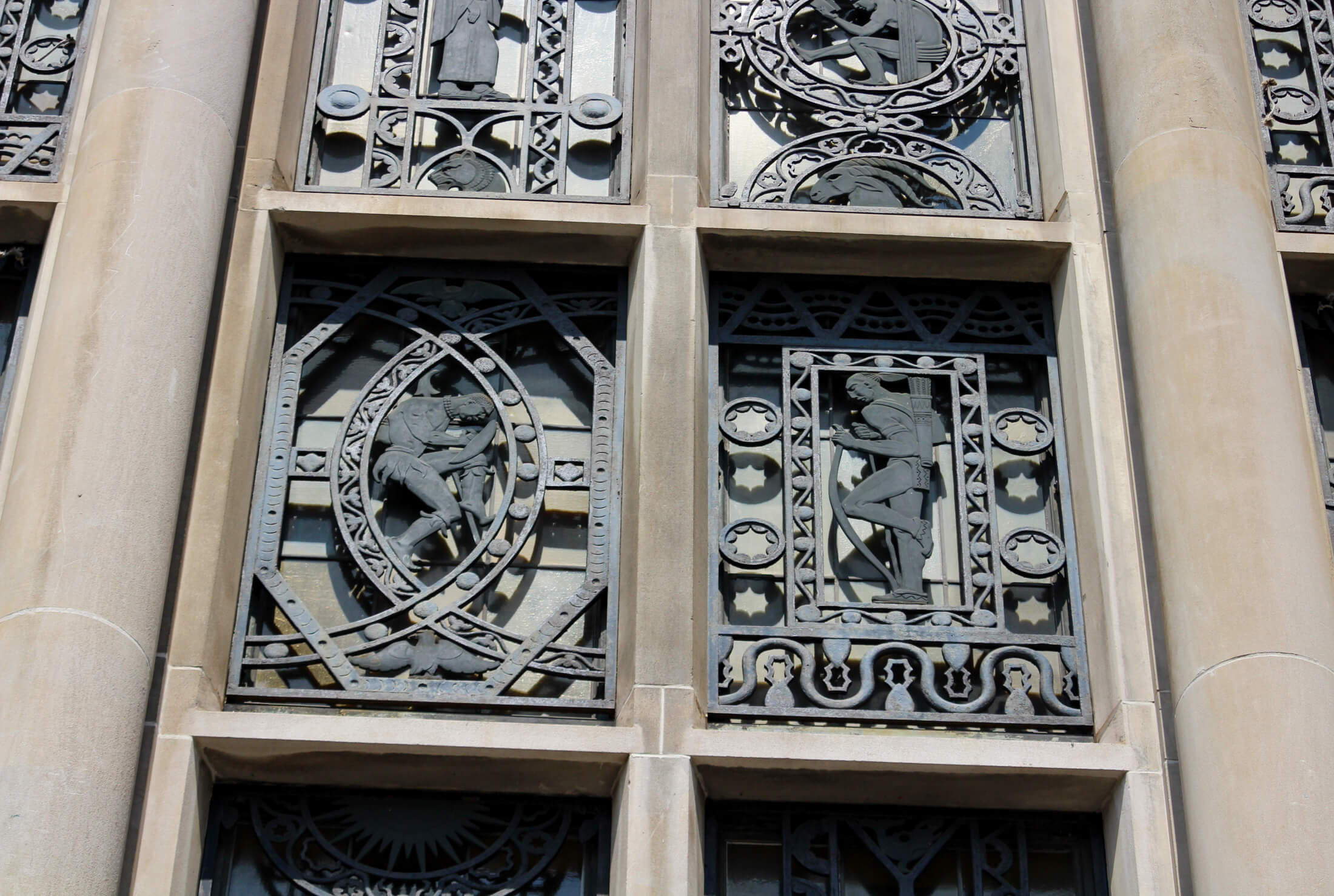
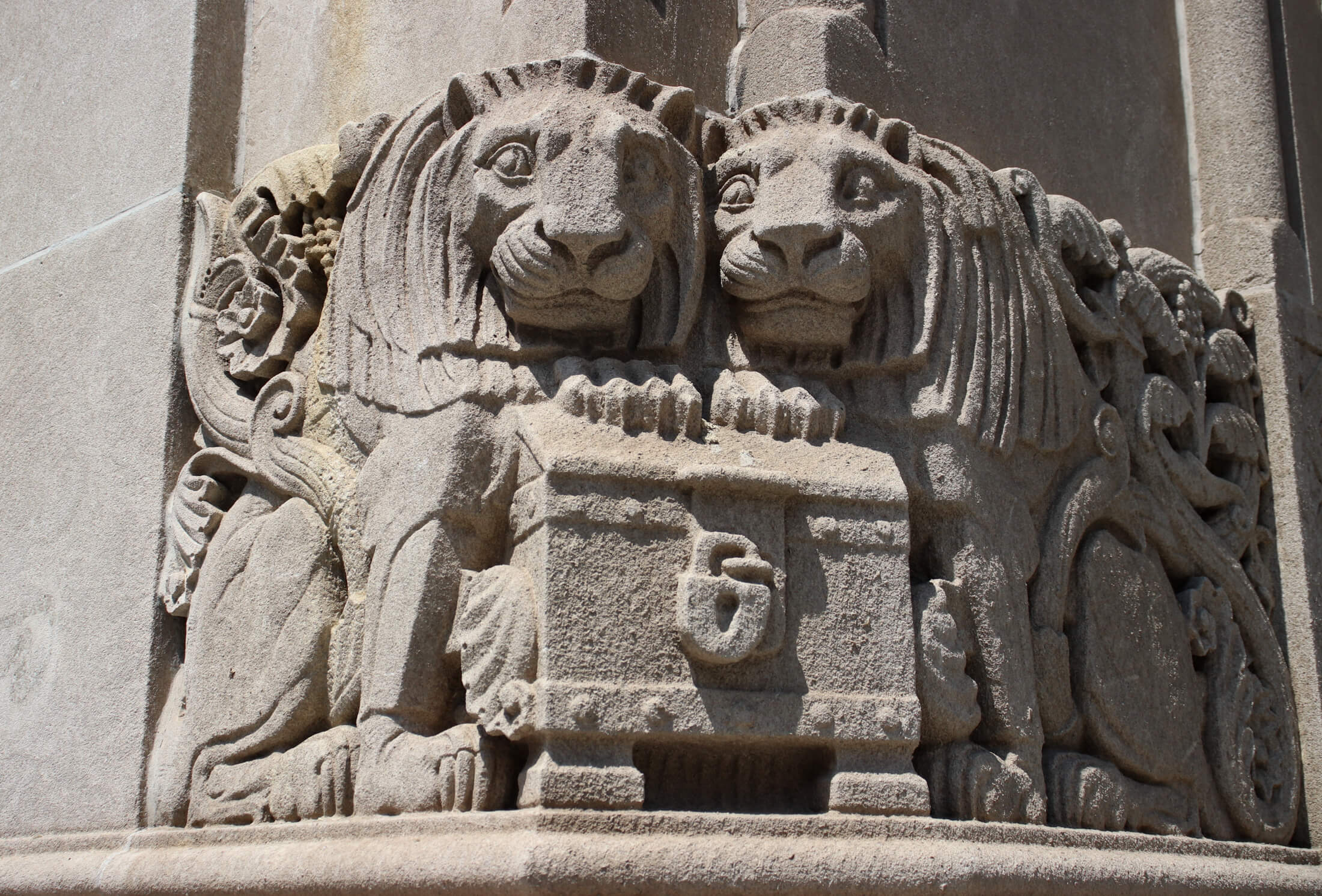
The Williamsburgh Savings Bank was one of Brooklyn’s most successful savings banks. Its main branch on Broadway in the shadow of the Williamsburg Bridge is one of the most architecturally significant banks in the city, its ornate interior a not-so-subtle reminder to customers that their money was safe in this opulent and obviously successful institution. The bank wanted a branch in downtown Brooklyn and purchased this prominent site at the corner of Hanson and Ashland places. By the time this Hanson Street building was completed, America was in a different place.
Banks didn’t have the same federal protection that they have today, there was no FDIC. They could fail in a matter of weeks under the right circumstances, and people could lose everything. So, if they were going to put their savings, large or meager, in the bank, that bank had to be strong and solvent. The WBSB could run ads in the papers, but the best way to show that thrift and savings were taken seriously by the bank could be found before one even walked through the door. Rene Chambellan’s artwork said it all.
The entryway and façade of the bank is festooned with Chambellan’s sculptures in stone and metal. The ornamental bronze screens in the tall windows and transoms are a repeated series of figures, a Native American and what looks to be an African man posed in classic Art Deco profile style. The rest of the screens are highly ornamental, with floral, animal and geometric patterns.
The representative stonework is amazing and tells a story. The arched main entrance to the bank and the capitals of the columns are a pictograph of symbolic savings. Lions guarding a strongbox at the base of the arch tell customers that their money is safe inside, as does an owl perched on top of another locked box. Two mighty griffins holding the flagpoles look down from above. All around are beehives and bees, squirrels, pelicans, beavers, all symbols of saving and thrift in the animal kingdom. They nest on the capitals above the columns, around entryways and in friezes, joined by representations of Athena, the Greek goddess of wisdom. Pineapples, symbols of welcome are woven into the parade of thrifty creatures.
The remaining stone sculpture is exceedingly well done, a collection of stone screens, within the circles are still more figures and geometric ornament. The icing on the cake are two reliefs – one of a masked burglar breaking in, the second, the burglar behind thick bars. There is just so much here, and much of it is much more visible through a zoom lens or binoculars, but even on the ground, it really is good. I’d put my money there in a minute, and many did, successfully carrying the bank through the Depression.
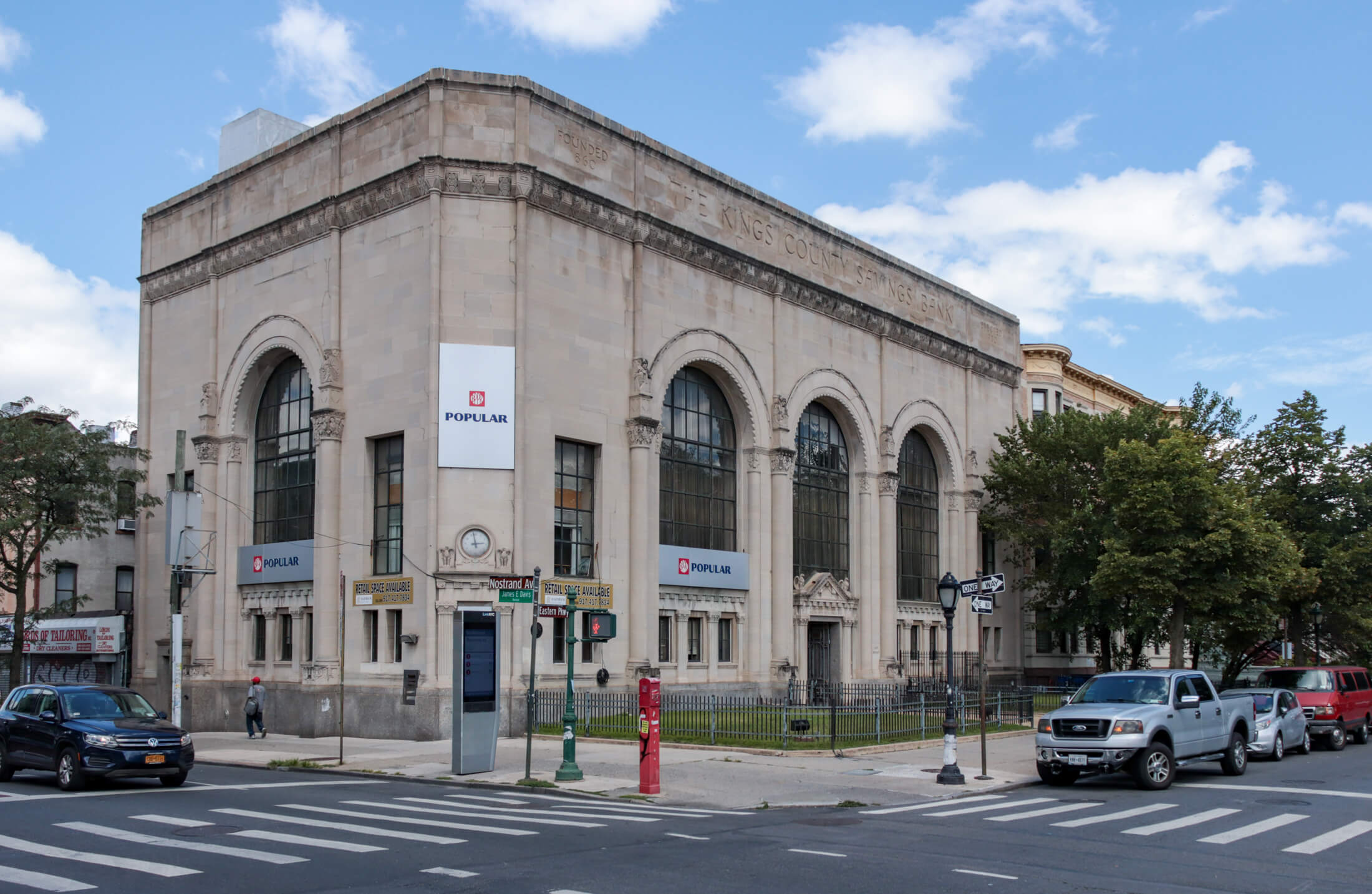
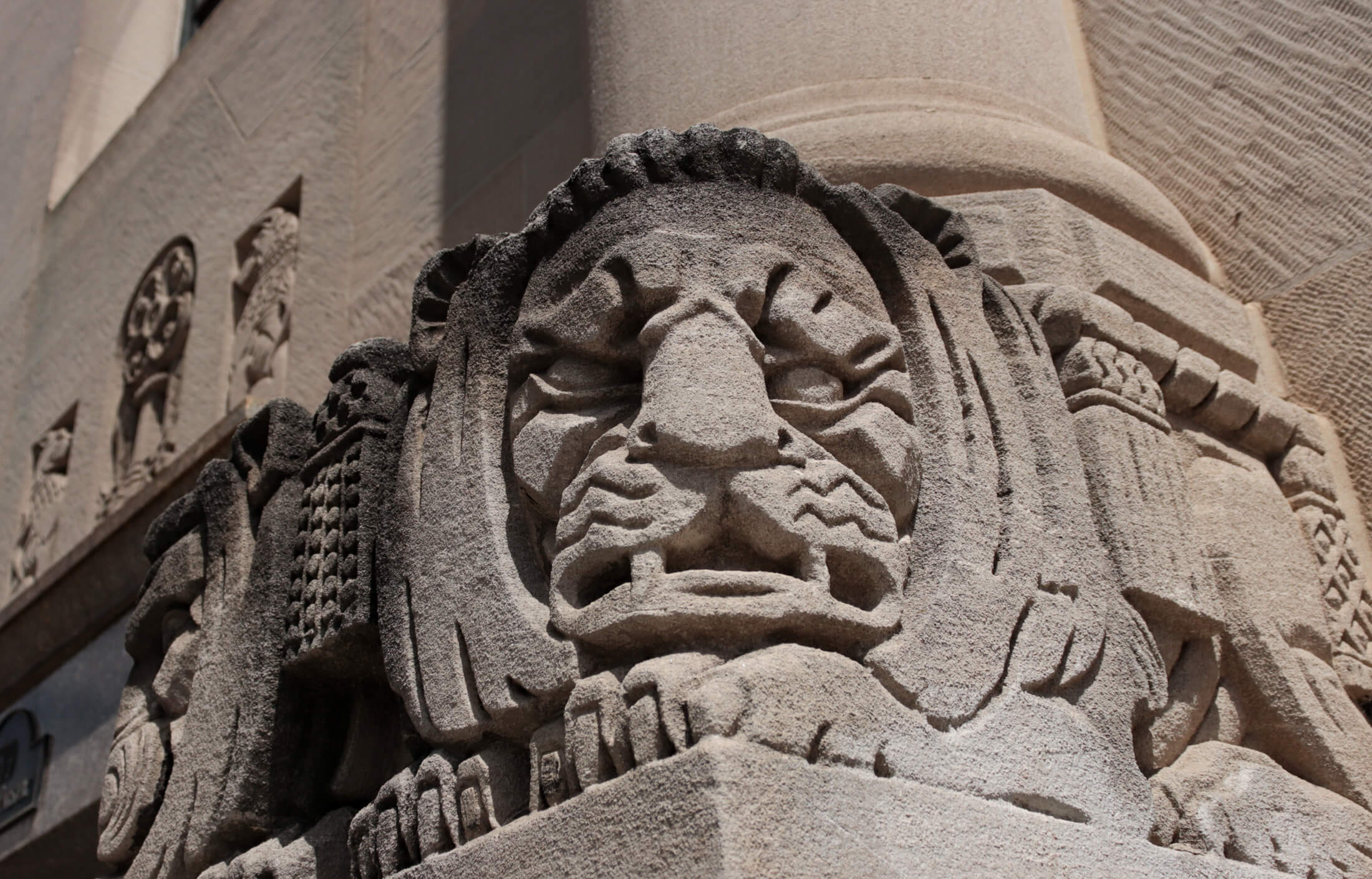
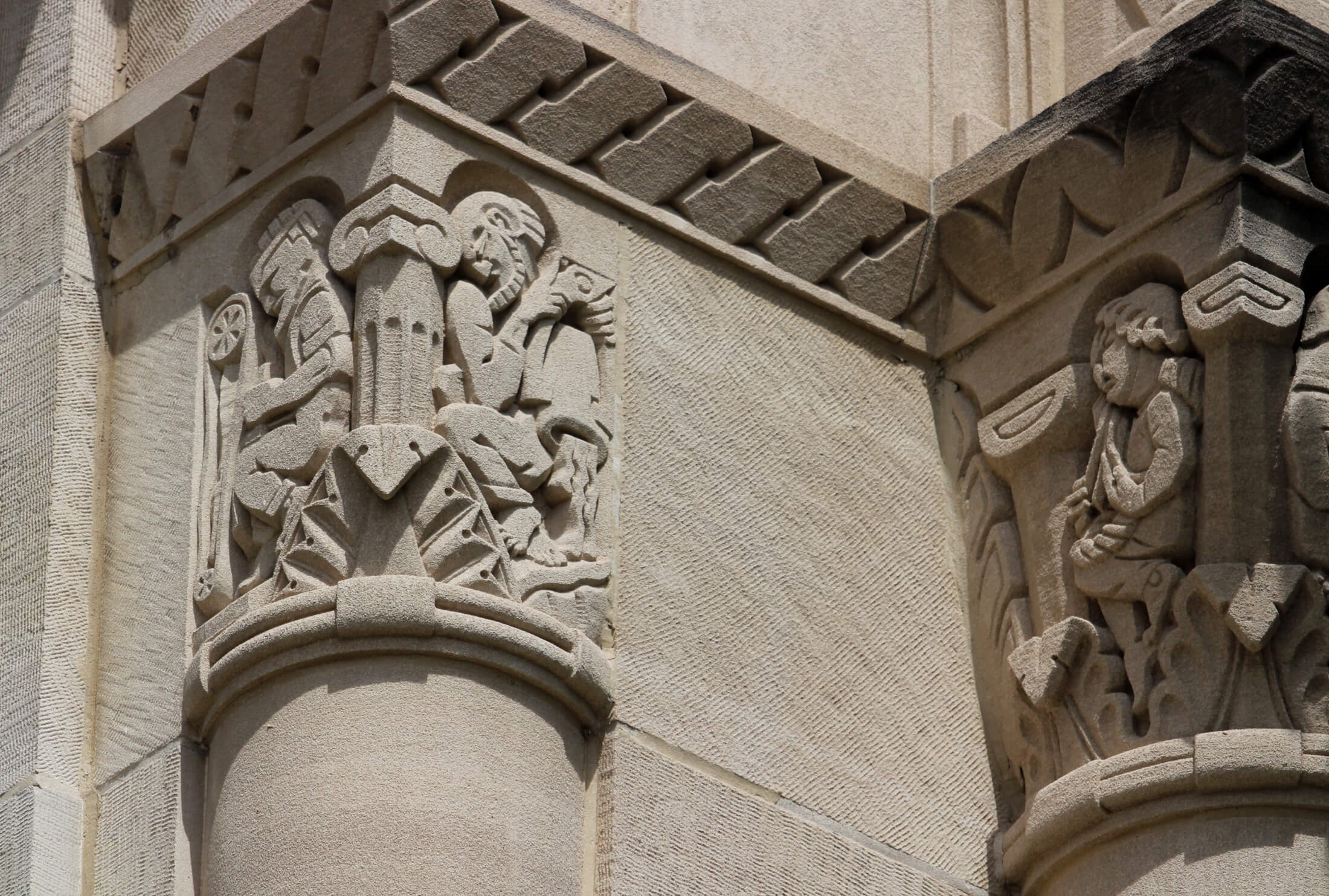
The firm of Halsey, McCormick & Helmer designed another bank in Brooklyn. Chambellan was once more called upon to craft the ornament. This one is on the corner of Nostrand Avenue and Eastern Parkway. It was built as the Kings County Savings Bank, completed in 1930. This bank is also landmarked, part of the Crown Heights North Historic District. Chambellan went with some of the same themes, but much simpler than the WBSB. Very stylized Deco lions guard the building, they are almost Aztec in their severe two-dimensional style. Pairs of alert canines can be found, as can bees, a crab? and two stern eagles flanking the clock at the corner of the intersection of the two streets.
Chambellan used a lot of geometric shapes here, triangles, zig-zags and more. The most interesting features are the ornaments on the capitals and the representative figures at the base of the colonettes between the tall arched windows. The figures depict the races of the world. Native American, African, Asian and Caucasian. The smaller figures in the capitals depict pairs of men working at different occupations: construction and architecture, science and literature. They were all sculpted in limestone in a very Gothic/Medieval/Deco style that was uniquely Chambellan’s own.
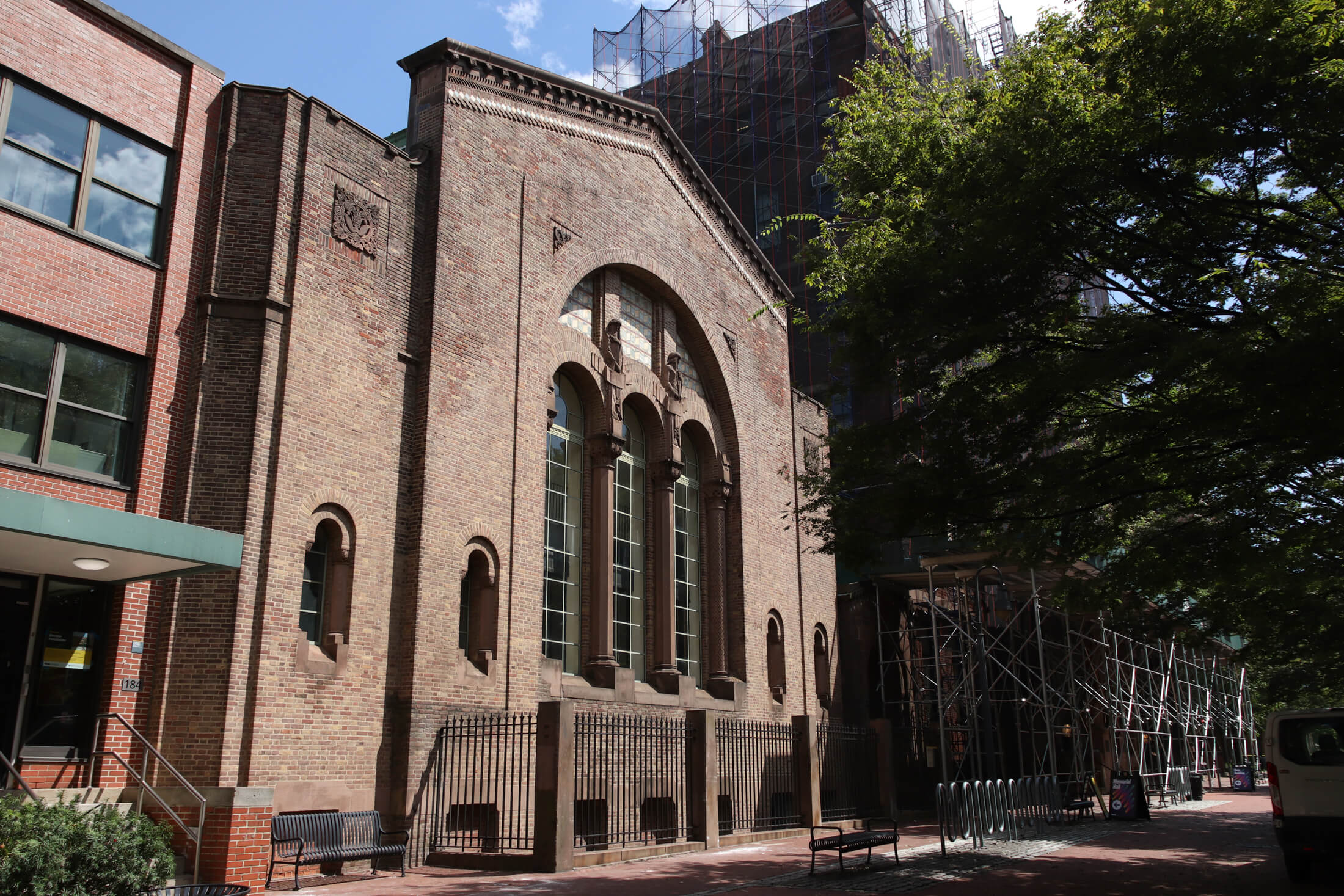
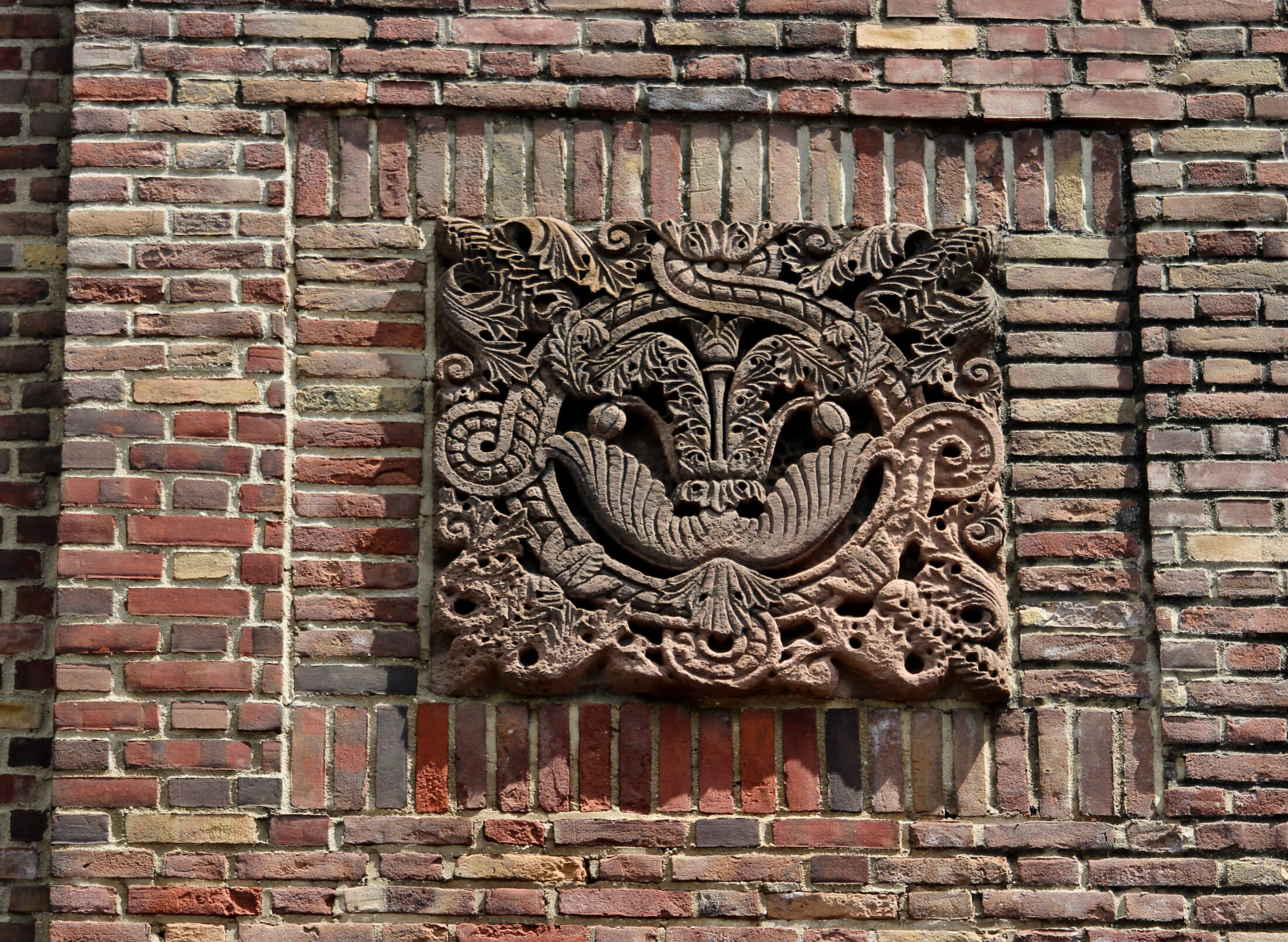
Another Brooklyn work was commissioned by fellow École alumnus John Mead Howells in 1926. Pratt Institute needed a large auditorium for its growing student body and hired Howells to design a building that would be a second annex to its Main Hall. Both the original hall and its first annex were in the late 19th century Romanesque Revival style, with massing and arched windows, so Howells designed his building to complement them, but with a modern 20th century twist.
His Memorial Hall has Romanesque-style arched windows within windows combined with Art Deco ornamentation. Chambellan didn’t do much, compared to other buildings, but his unique touch can be found in the statuary and carved bosses that provide highlights to a rather stark facade. Howell and his partner Raymond Hook (also an École grad) had already employed Rene’s talents for their Radiator Building, the Daily News Building, and Chicago’s Tribune Tower.
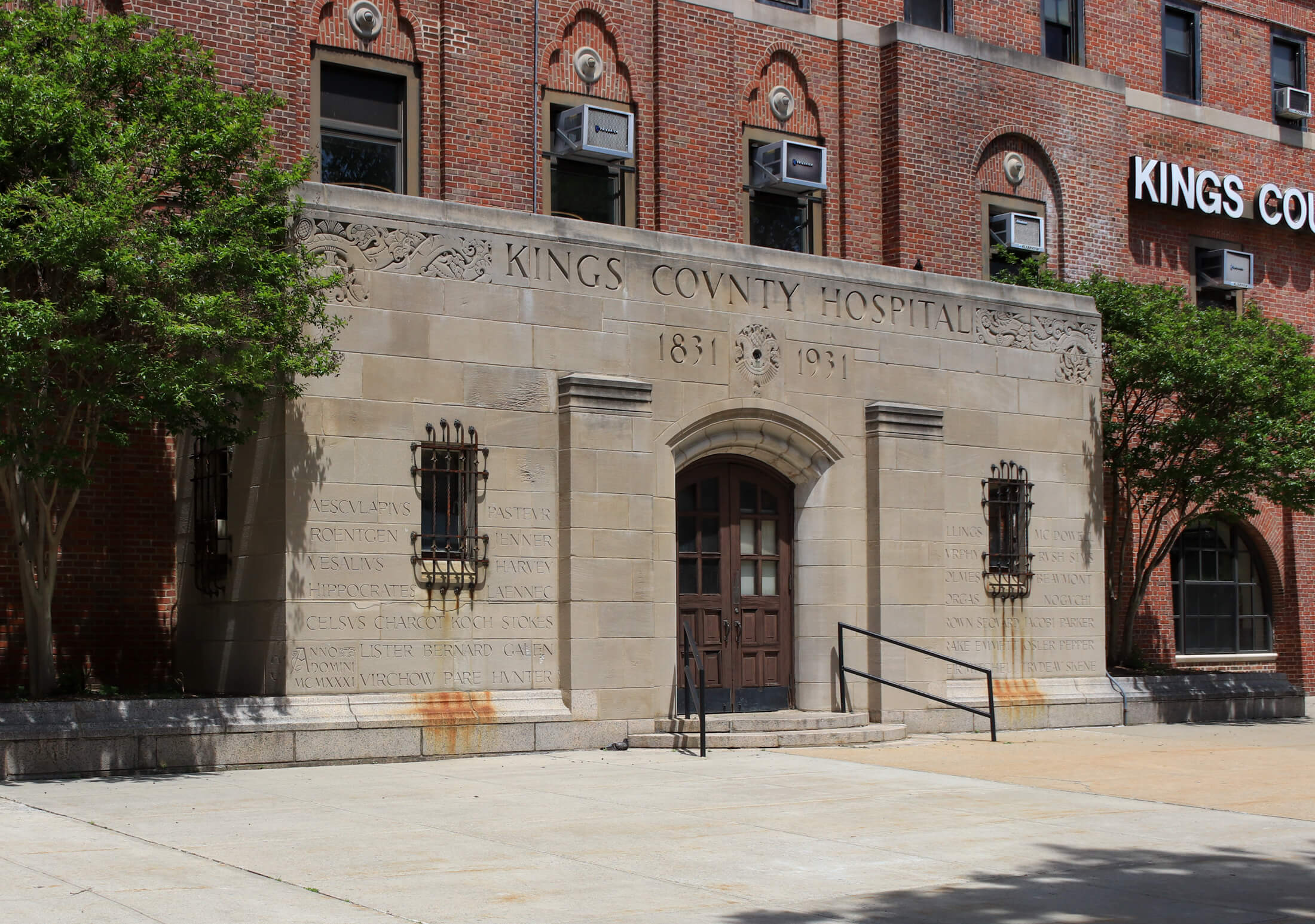
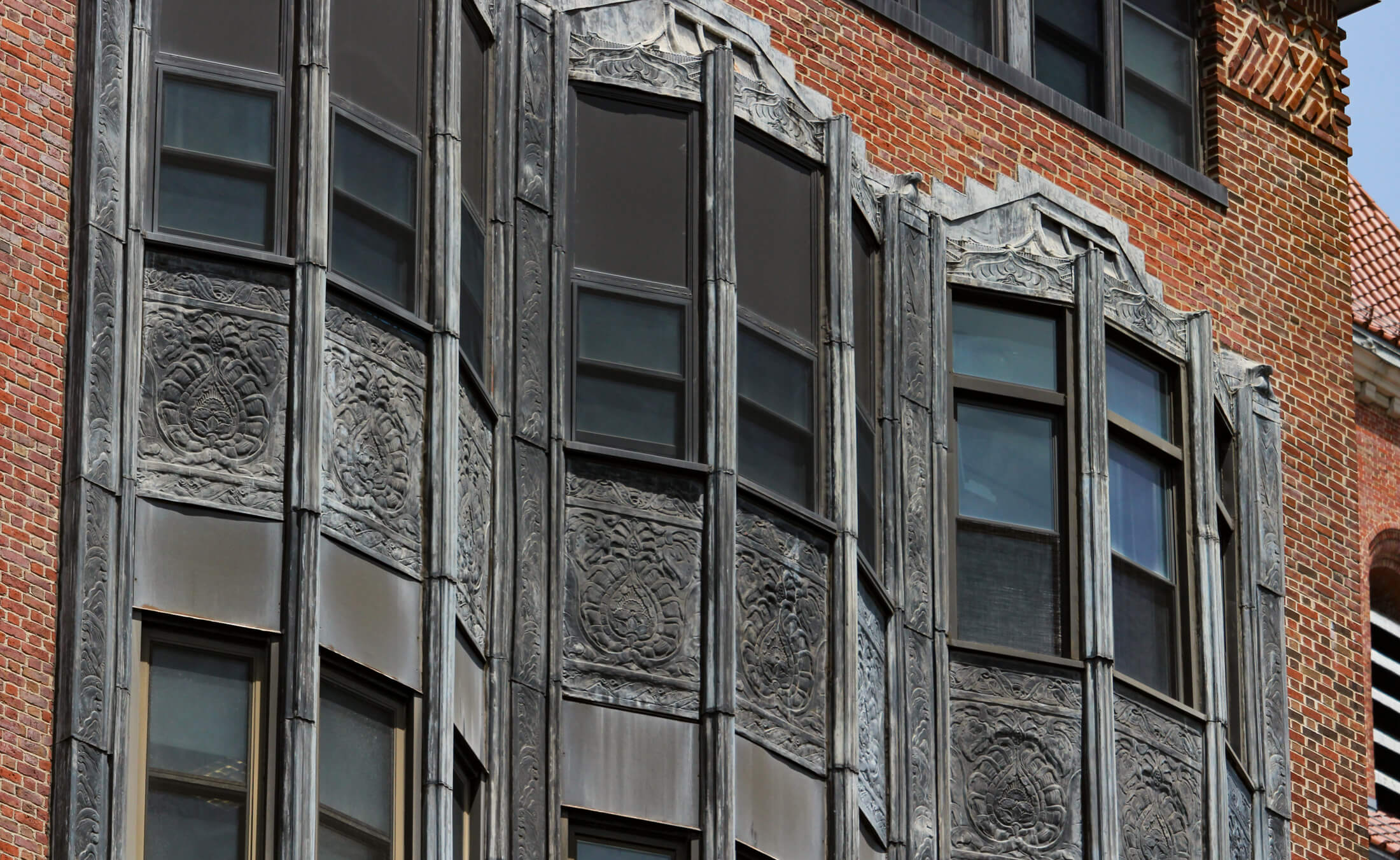
Chambellan’s talent was also apparent on the façade of what was originally the Nurse’s Training School at Kings County Hospital, built in 1930-32 and designed by Leroy P. Ward. He designed the signage and font and placed the names of famous scientists on panels on either side of the main entrance. He was also responsible for the many bronze embossed plaques and frames that make up the front window façade.
Finally, in Brooklyn, Chambellan also designed the ornamentation around the tall arched windows, the entryway and the bronze doors of the East New York Savings Bank building on the corner of Eastern Parkway and Utica Avenue, now an individual landmark. His bronze doors consist of repeated design panels, with both men and women, as well as floral panels, much like the Williamsburg Savings Bank window panels.
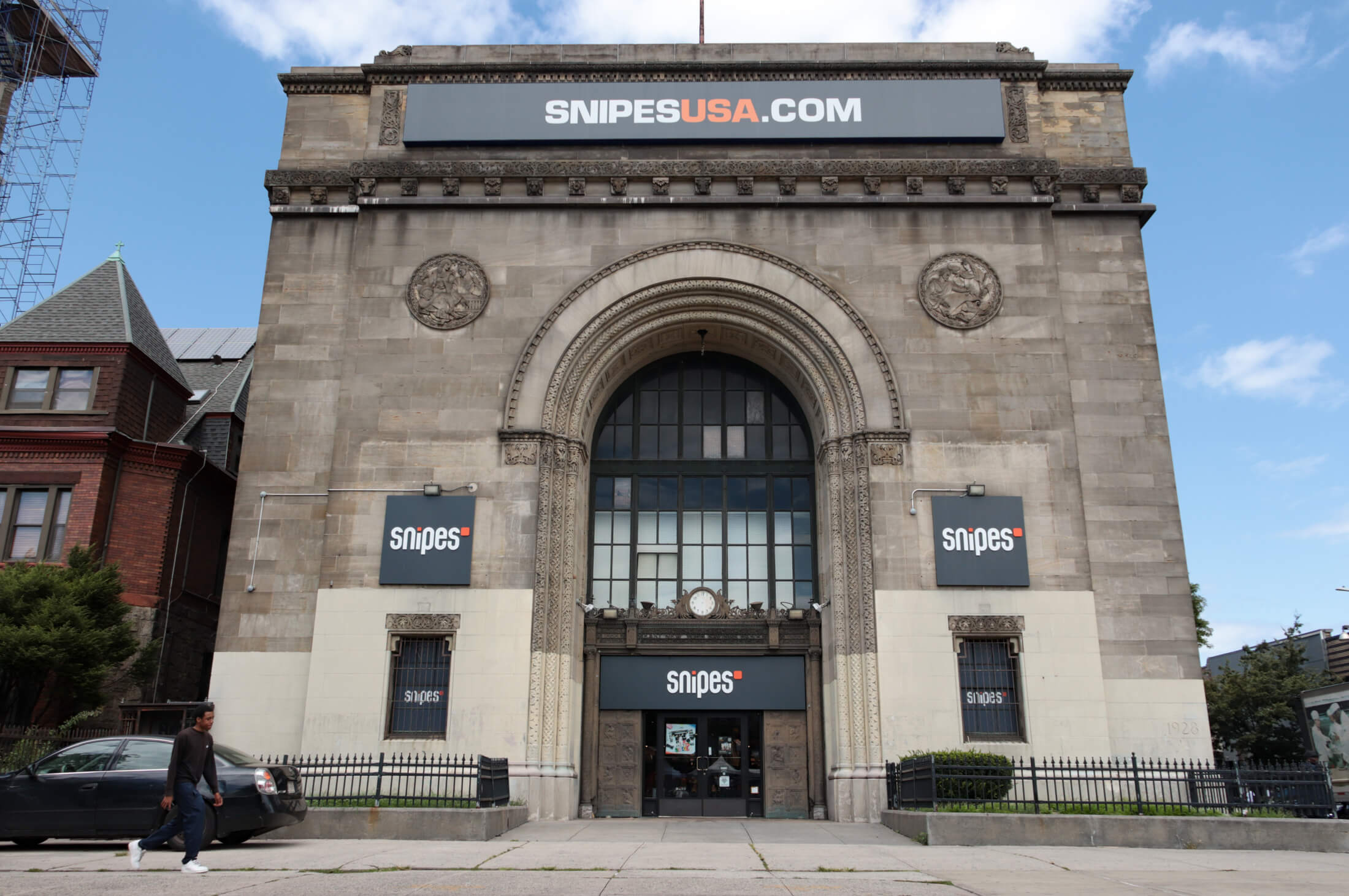
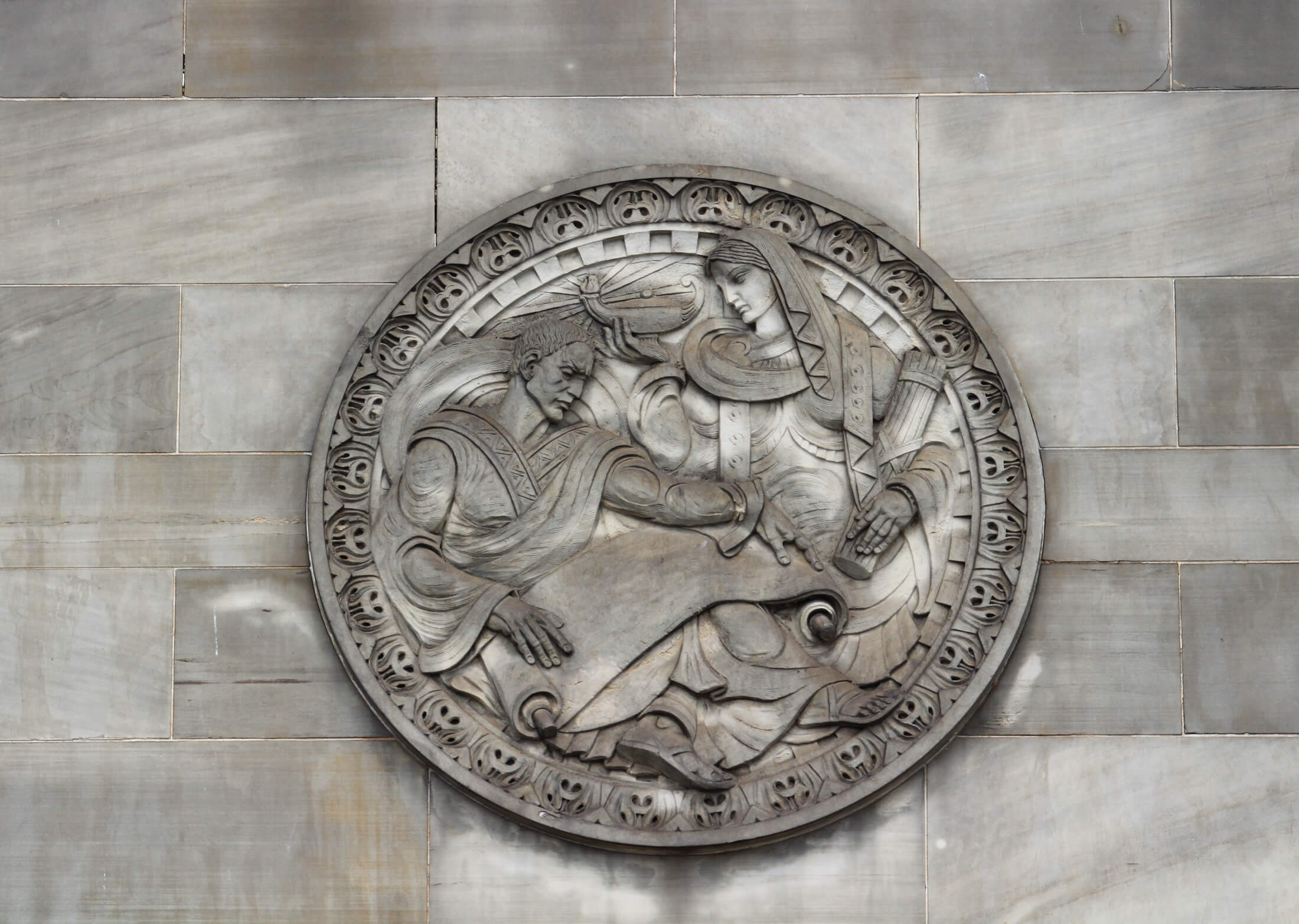
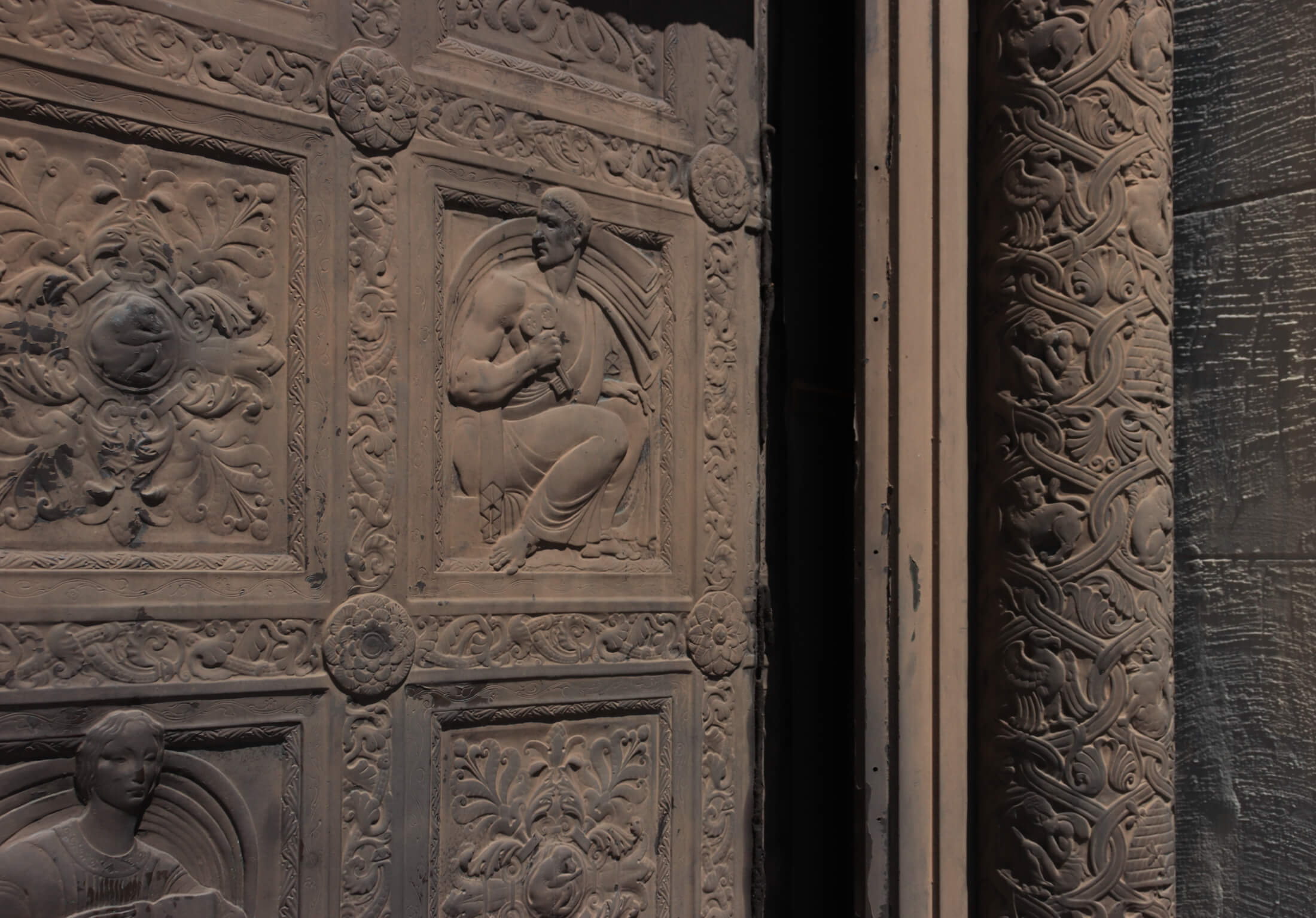
Three sides of the bank feature his relief panels, depicting commerce and savings. His work is all around the façade, from top to bottom, including the row of brackets and cornice ornament that rings the building at the attic level. He sculpted more running scrolled relieve on the upper levels.The shields on the Utica Avenue side of the building and over that entrance depict beehives and bees, which can also be found in the carved capitals and in panels that depict beehives and men carrying full satchel. Fierce griffins, which traditionally guard treasure are used often. After all, this was also a savings bank.
Rene Chambellan’s work across the country has been catalogued into the 1950s by current biographies, but he worked right up until his death. More of his iconic work is still out there to be found. He lived in Cliffside Park, N.J., with his wife, children and grandchildren around him until his death from multiple strokes occurred in 1955. He was only 62. He left an incredible legacy, most of which will stand up to the whims of architectural popularity and be recognized as true greatness for generations to come.
[Photos by Susan De Vries unless noted otherwise]
Related Stories
- Architect Cass Gilbert Designed Innovative and Inspiring Public and Commercial Buildings
- Civic Pride: From Romanesque Revival to Neo-Brutalist, Brooklyn’s Firehouses Impress
- The Many Lives of Downtown Brooklyn’s Offerman Building
Email tips@brownstoner.com with further comments, questions or tips. Follow Brownstoner on Twitter and Instagram, and like us on Facebook.





What's Your Take? Leave a Comment